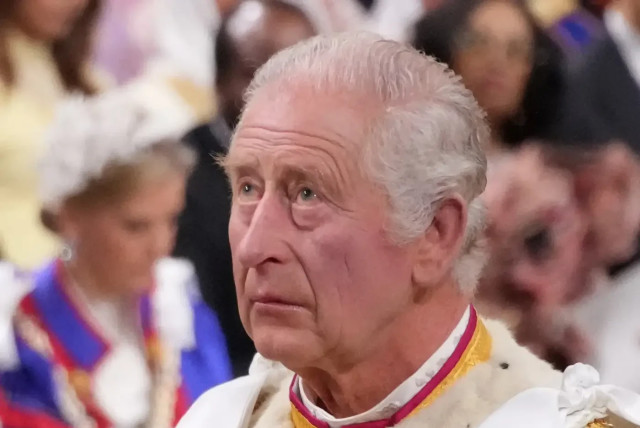Is King Charles the unluckiest name in royalty history?

Is it true that Charles is an unlucky name for a monarch? Here, we take a look at some of the unfortunate holders of that royal moniker.
When King Charles ascended to the British throne after the death of his mother, Queen Elizabeth II, in September 2022, there were murmurs of surprise when he took the name King Charles III. Rumors had persisted for years he could possibly take another name due to the unlucky history of his predecessors, who were called Charles.
When Buckingham Palace announced in early February that Charles was suffering from cancer, there were many who must have thought, “Here we go again.” The Royal Family had already been rocked in recent times due to Charles’s second son, Prince Harry, resigning from his royal duties and moving to the United States with his wife, Meghan Markle. Rumors have also persisted recently regarding the health of the future queen, Kate Middleton, due to infrequent public appearances and apparent tampered social media photos.
But is it true that Charles is an unlucky name for a monarch? Here, we take a look at some of the unfortunate holders of that royal moniker.
CHARLES I
Charles I, the first British monarch to hold the name, came to the throne in 1625 after the death of his father King James I. Charles was a believer in the divine right of kings, and in 24 years of power, Charles had to deal with the British Parliament attempting to curb his powers and a regular lack of money. In 1642, he went to war with Parliament, initiating the English Civil Wars, and faced huge opposition from the ordinary power for his belief in absolute monarchism. Charles eventually lost the Civil War to an Oliver Cromwell-led Parliamentary force, and he was tried, convicted, and executed for high treason in January 1649, losing his kingdom and his head. After Charles I’s death, Cromwell initiated a period in British history known as the Commonwealth, which turned out to be so dour, the British people were ecstatic when Charles II brought back the monarchy in 1660.
Unlucky rating: 10/10
CHARLES II
Son of King Charles I, the future-King Charles II fled into exile when Cromwell took power in English. He returned from exile to restore the Monarchy, ruling from 1660 to 1685. Despite being known as “the Merry Monarch” Charles II also saw his reign suffer infamous misfortune.
In 1665 the Great Plague killed thousands across his kingdom, and if that wasn’t enough, one year later, a small fire started in a baker’s shop on Pudding Lane in London, gutting the ancient city. The Great Fire of London of 1666 has become a notorious event in British history.
Having no legitimate children with his wife, Catherine, he had at least fifteen illegitimate offspring. Charles II ruled for twenty-five years before dying at 54 from an apoplectic fit in 1685, with his burial taking place at Westminster Abbey after his death at Whitehall Palace.
Unlucky rating: 5/10
CHARLES X OF FRANCE
Charles X was King of France and Navarre from 1824 to 1830. Charles X staunchly advocated for absolutism and dismissed the Charter of the French Liberties established by his predecessor, Louis XVIII. In July 1830, he suspended the legislature, curtailed voting rights, and imposed press restrictions, provoking a strong backlash from liberals and radicals. Furious citizens in Paris erected barricades in the streets, engaged in armed confrontations with soldiers, and displayed the revolutionary tricolor atop Notre Dame cathedral. Ultimately, Charles was compelled to abdicate after only six years on the throne and seek exile in Britain. He was succeeded by his cousin, Louis-Philippe, the son of the Duke of Orleans, who had supported the French Revolution.
Unlucky rating: 8/10
CHARLES II OF SPAIN
Perhaps unfortunately remembered as one of the ugliest monarchs in history, Charles II ruled for a relatively long time as King of Spain from 1665 to 1700. His physical disabilities are often thought to have been the result of generations of royal inbreeding, as royals typically married within the family, leading to an accentuated “Habsburg jaw.” He was cursed with ill health throughout he life, with commentators stating that people waited for his death “from the moment he was born.” A quick glance at Charles’s portrait reveals an unfortunate looking king, and he died childless in 1700, leading to the Spanish Wars of Succession.
Unlucky rating: 9/10
Honorable mentions
Charles VI of France was truly mad. He would suffer frequent fits and convulsions, and his madness became so bad he eventually believed he was made of glass and had himself fitted with wooden poles so as not to break!
Charles the Bald Charles the Bald was a 9th-century king of West Francia, King of Italy, and emperor of the Carolingian Empire. King of the Franks for 30 years, Charles’s nickname allegedly is used in an ironic way, and he was hairier than one could imagine. We wouldn’t want to go down in history forever as The Bald though!
If ‘Bald’ is an unfortunate nickname to receive as a king, what about ‘fat?’ Another King of the Franks and the Carolingian Empire in the 9th century, Charles the Fat was the last Carolingian emperor of legitimate birth and the last to rule a united kingdom of the Franks. Although not much is known about his genuine physical appearance, it seems to be the trend that if you were a Frankish king in the 9th century, you were going to be stuck with an unfortunate nickname!
Jerusalem Post Store
`; document.getElementById("linkPremium").innerHTML = cont; var divWithLink = document.getElementById("premium-link"); if (divWithLink !== null && divWithLink !== 'undefined') { divWithLink.style.border = "solid 1px #cb0f3e"; divWithLink.style.textAlign = "center"; divWithLink.style.marginBottom = "15px"; divWithLink.style.marginTop = "15px"; divWithLink.style.width = "100%"; divWithLink.style.backgroundColor = "#122952"; divWithLink.style.color = "#ffffff"; divWithLink.style.lineHeight = "1.5"; } } (function (v, i) { });

